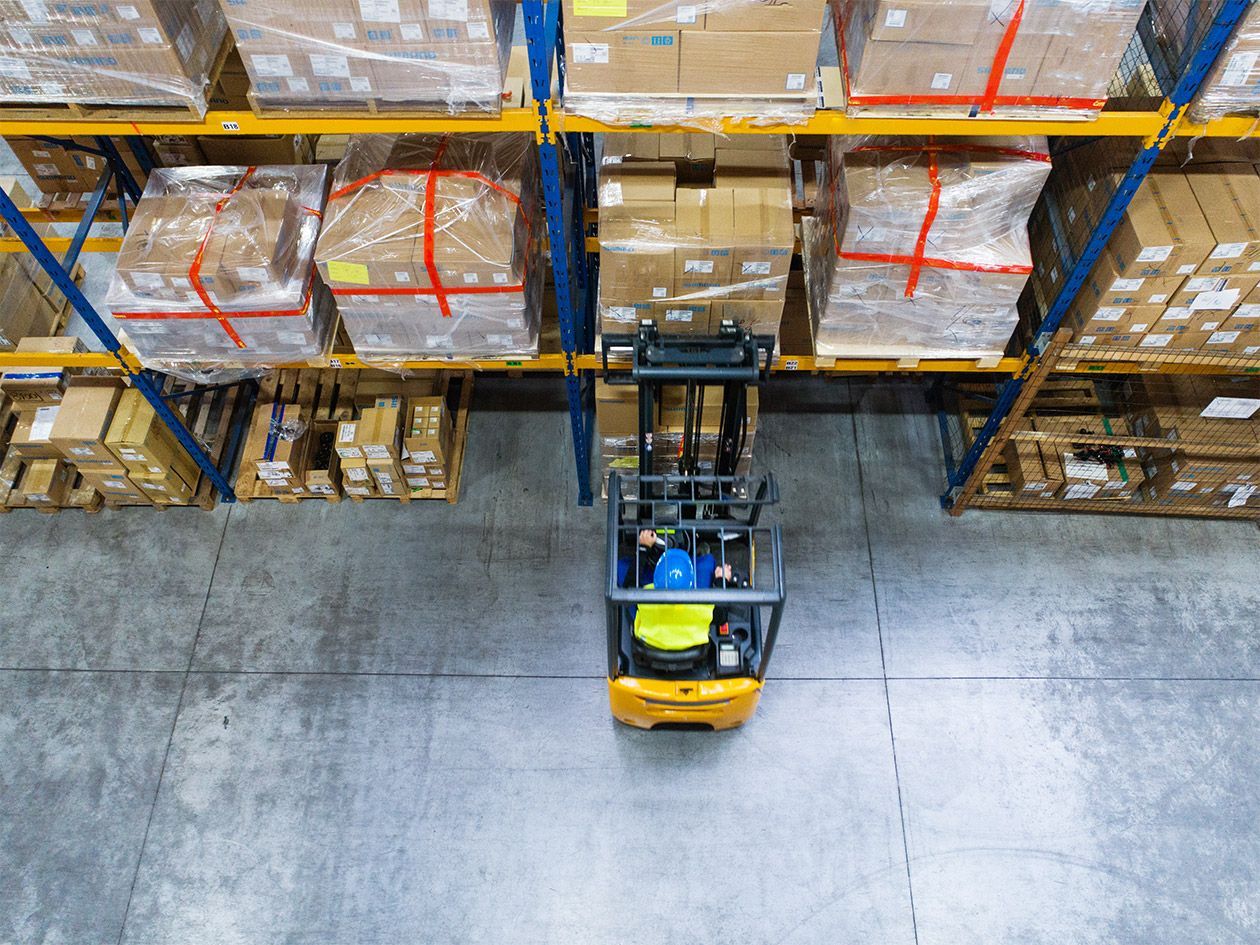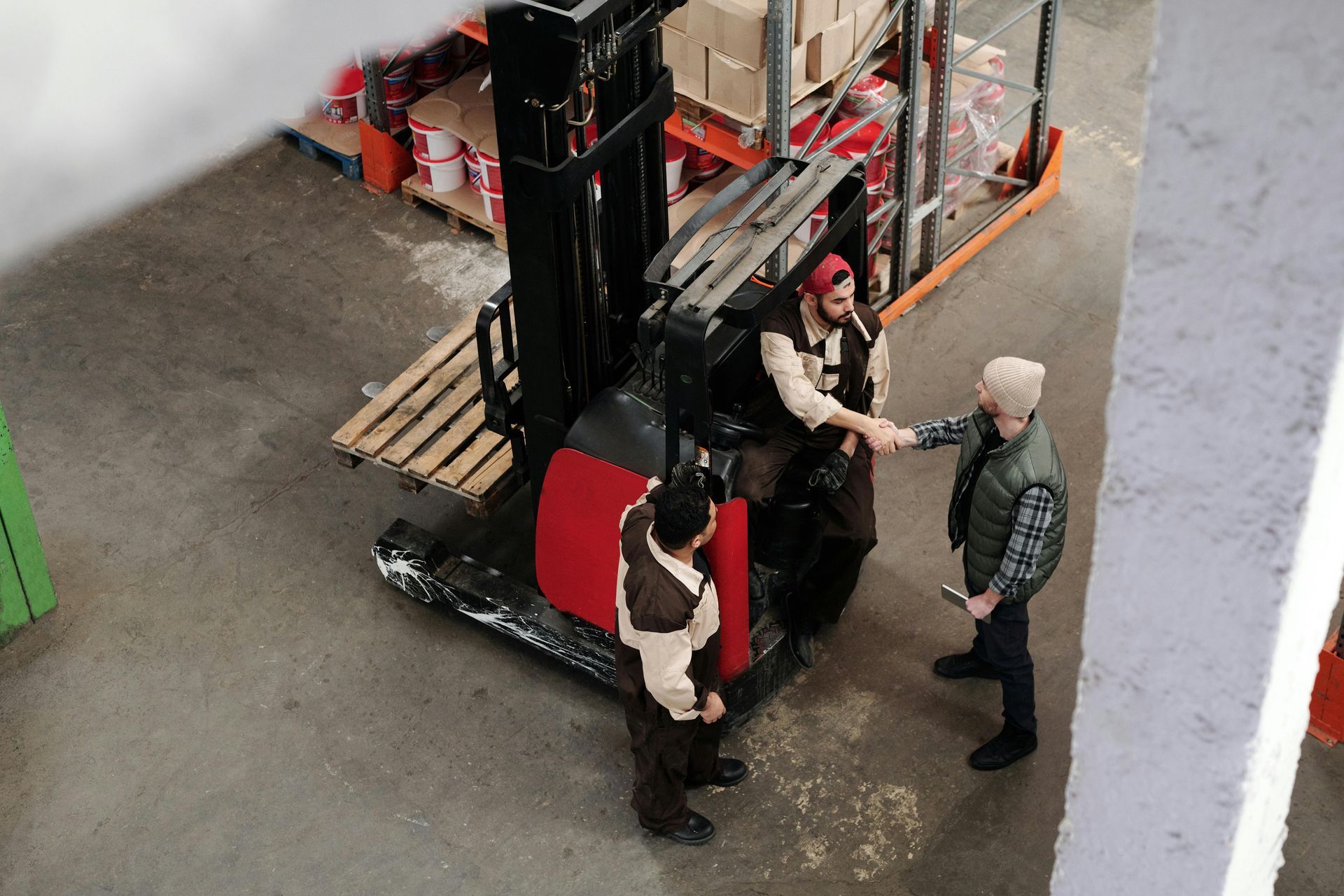Common OSHA Material Handling Violations & Prevention Strategies That Protect
Picture this: A warehouse manager receives a $47,000 OSHA fine for material handling violations that could have been prevented with a $2,000 training program.
This scenario plays out daily in warehousing, retail, and industrial facilities, where material handling violations consistently rank among OSHA's most cited infractions.
The financial impact extends far beyond fines. Workplace injuries cost U.S. employers upwards of $170 billion annually (over $1 billion a week), with material handling incidents accounting for nearly 25% of all workplace injuries.
With the proper training and resources, most workplace accidents can be avoided. Innovative prevention strategies can transform compliance costs into competitive advantages.
Below are just a handful of common OSHA violations found in warehouse environments, along with strategies organizations can implement to stay in compliance while keeping their employees safe.
Frequently Cited OSHA Material Handling Violations
Improper Lifting Techniques
The Problem: Workers often lift beyond capacity or use poor body mechanics, either because they are rushing through the task or haven't been trained on the proper lifting techniques.
Prevention Strategy: Organizations can implement continuous, comprehensive ergonomic training programs focusing on proper lifting posture, weight limits, and team lifting protocols.
ROI Impact: For every $1 invested in ergonomic training, companies yield, on average, $3 in reduced injury costs (and, in best-case scenarios, could even generate an ROI of 15:1).
Inadequate Personal Protective Equipment (PPE)
The Problem: Missing or improper (compromised or ill-fitting) safety gear during a material handling accident can cause significant injury (and in worst-case scenarios, death).
Cost-Effective Solution: Establish PPE audit systems and provide workers with properly fitted equipment. Ensure there is accountability and a safety-first culture throughout the organization.
Budget Tip: Bulk purchasing and equipment maintenance programs reduce long-term PPE costs by 30%.
Forklift Operation Violations
The Problem: Untrained operators and inadequate equipment maintenance can create significantly dangerous situations, not just for the driver but also for anyone in the general vicinity.
Prevention Focus: Enforce mandatory certification programs and daily equipment inspections. Modern safety technology, like proximity sensors and speed limiters, prevents up to 50% of forklift-related incidents.

Blocked Emergency Exits and Aisles
The Problem: While some companies may brush it aside, material storage obstructing evacuation routes can cause catastrophic results in an emergency.
Workflow Optimization: Implement effective strategies, such as the 5S methodology, to maintain clear pathways while maximizing storage efficiency. This approach reduces emergency response times and improves operational flow.
Inadequate Fall Protection
The Problem: Missing guardrails and safety systems for elevated work are a perfect storm for accidents. In fact, inadequate fall protection continues to be the top OSHA violation year after year.
Technology Solution: Install modular safety systems that adapt to changing warehouse layouts. An initial investment of $10,000-15,000 prevents potential $1 million liability claims. You can also implement training programs and protocols for when employees must work from any height.
Improper Stacking and Storage
The Problem: Unstable material stacks can create collapse hazards, injuring your employees and damaging your products and equipment. They can also decrease efficiency in your daily operations.
Risk Assessment Strategy: Develop load calculation protocols and height restrictions. You should also train supervisors to conduct daily stability inspections using standardized checklists and procedures, and encourage floor employees to identify and flag any stacks they deem unsafe.
Conveyor System Hazards
The Problem: Inadequate guarding and lockout/tagout procedures; during maintenance and servicing, unexpected startups or energy releases (including electrical, thermal, mechanical, chemical, or pneumatic) can result in serious injury or death.
Equipment Maintenance: Consider establishing predictive maintenance schedules using IoT sensors to monitor system performance (and predict when equipment failure may occur); this significantly reduces conveyor-related incidents while reducing downtime costs. Additionally, ensure all employees know the proper protocol when working on equipment.
Manual Material Handling Overexertion
The Problem: Workers handling loads beyond safe limits can cause significant musculoskeletal injury, including back injuries, sprains, strains, and ligament tears (among others)
Ergonomic Solutions: Introduce mechanical aids like lift tables, dollies, and pneumatic lifts. Some studies have shown that these tools have the potential to reduce workplace injuries by 25% while improving productivity.

Hazard Communication
The Problem: Improper storage and labeling of hazardous chemicals that are "known to be present in the workplace in such a manner that employees may be exposed under normal conditions of use or in a foreseeable emergency" (this is the second most common OSHA violation).
Compliance Strategy: Adhere to the Hazard Communication Standard (HCS), providing the proper labels and safety data sheets. Consider implementing digital inventory management systems with automated safety data sheet (SDS) access, which ensures adequate storage protocols while streamlining regulatory reporting.
Inadequate Training Documentation
The Problem: Missing or incomplete safety training records can cause serious issues with OSHA, regardless of how safe your practices are.
Employee Training Techniques: Deploy digital learning platforms that track completion rates and competency assessments. This approach reduces audit preparation time and provides a convenient, primary platform to store such records. You should also keep records of each safety training completed by each team member throughout their employment.
Maximizing Your Safety Investment ROI
Complying with OSHA doesn't have to be a financial burden; in fact, companies that employ effective strategies and invest in the necessary equipment and training platforms see a significant ROI.
Immediate Cost Savings
- Reduced insurance premiums
- Lower worker compensation claims
- Decreased OSHA fines and penalties
Long-Term Financial Benefits
- Improved productivity through optimized workflows
- Enhanced employee retention and morale
- Competitive advantages in client relationships
Budget-Friendly Implementation
Start with high-impact, low-cost solutions, such as comprehensive training programs, basic ergonomic equipment, and standardized procedures. These foundational elements create immediate improvements while building toward more sophisticated safety systems.

Connect With Benco Industrial Equipment
The path to material handling safety excellence begins with an honest assessment of current practices. Conduct facility audits, engage employees in safety discussions, and prioritize violations based on risk and cost impact.
Remember: Compliance isn't just about avoiding fines—it's about creating sustainable operations that protect your most valuable assets: your people and your profitability.
At Benco Industrial Equipment, we are invested in providing you with the equipment, maintenance, and resources needed to keep your warehouse operations running smoothly and safely.
Whether it be forklifts, pallet jacks, order pickers, or a custom mix of solutions, our team has the expertise and inventory to keep you covered.
Contact us today to see how we can help!



